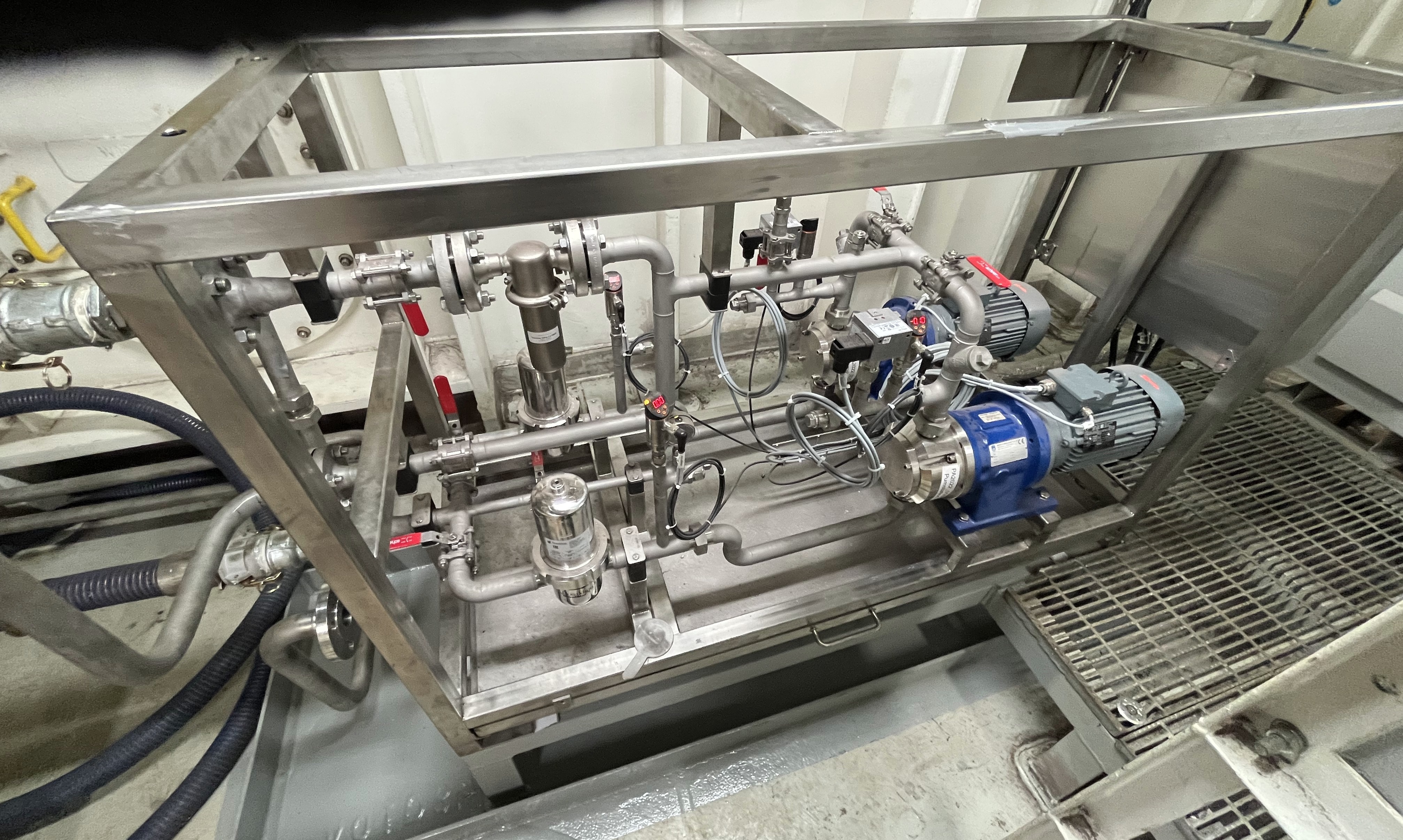Pump for the SCR process
Selective catalytic reduction of nitrogen oxides (SCR process)
VANE-MAG® MPA - corrosion-resistant and magnetically coupled rotary vane pumps made of stainless steel for the conveying of urea for the reduction of nitrogen oxides
The SCR process
The Selective Catalytic Reduction (SCR) process is an exhaust aftertreatment technology primarily used for the reduction of nitrogen oxides (NOx) in the exhaust gases of combustion engines. It was originally developed for diesel engines but is also applied in gas turbines and some stationary combustion plants.
The SCR process works by injecting a urea-based reducing agent, typically AdBlue or Diesel Exhaust Fluid (DEF), into the exhaust stream before a special catalyst. The catalyst usually consists of a material such as titanium dioxide or zeolite, containing metals like vanadium, tungsten, or molybdenum as active components. These metals act as catalysts to promote chemical reactions.
When the exhaust comes into contact with the reducing agent, the nitrogen oxide present reacts with the ammonia (NH3) generated through the hydrolysis of urea. The reaction converts the harmful nitrogen oxides into harmless nitrogen (N2) and water (H2O). This process is called selective because it selectively reduces the nitrogen oxides while leaving other components of the exhaust unchanged.
SCR systems provide an effective method for NOx reduction and enable vehicles and facilities to comply with emission regulations. Nitrogen oxides are significant air pollutants that can contribute to air pollution and smog formation. By implementing the SCR process, vehicles and facilities can reduce NOx emissions by up to 90 percent.
SCR systems are used in various sectors, including road vehicles such as cars, trucks, and buses, as well as in shipping and power plants. They contribute to improving air quality and reducing the environmental impact of combustion engines by helping to reduce the release of nitrogen oxides.
The difference from Selective Non-Catalytic Reduction (SNCR) lies in the catalyst used, which reduces the required temperature for the reduction process to around 300°C. The catalyst acts as an accelerator for this process. SNCR only works at temperatures above 850°C, which is not reached in typical engine combustion processes.
Case Study
A notable SCR system on an offshore platform off the west coast of Norway was designed and implemented by H+H Engineering & Service GmbH (www.huhes.de), a long-standing customer of MARCH and an experienced plant engineer for SCR systems. The system is specifically designed for all 8 main engines, each with approximately 5,800 kW. In the case of full-load operation of all 8 engines simultaneously, a urea quantity of 825 l/h at approximately 12 bar is required to reduce nitrogen oxides according to the desired Tier III level. In practice, only 1-2 engines run simultaneously in partial load range for power generation. However, the system must always designed for full-load operation and the entire power output.
SCR systems typically require a pump differential pressure of approximately 8-9 bar. Due to the additional height difference on the platform between the tank, pump, and dosing unit of about 20-25 meters, the overall pressure loss in the system increases, necessitating the use of pumps with significantly higher differential pressure. MARCH PUMPEN provided the solution with their VANE-MAG® MPA rotary displacement pumps. The platform can only accessed by helicopter and boat, so the requirement for fail-safe operation is very high. The system must run continuously for the installation to be economically viable. Therefore, a redundant pump station was provided with two identical pumps, each capable of delivering the required maximum flow rate independently.
The reducing agent, a 40% urea solution, is injected directly into the exhaust stream behind the engine exhaust outlets. A large 100m³ tank located in one of the platform's columns is used for storing the reducing agent. The pump station is situated directly next to the tank on the same level as the tank floor. The pumps always operate at maximum capacity and convey the maximum amount of urea. The required portion for the SCR process is directed to the dosing devices of the system, while the excess urea circulates back into the tank via an overflow valve.

The implementation of this SCR system on the offshore platform and ship engines achieves effective reduction of nitrogen oxides to comply with stringent environmental regulations and preserve the climate. The system enables controlled and precise dosing of the reducing agent to clean the exhaust gases of ship engines and minimize air pollution. By reducing harmful emissions, the SCR system contributes to improving air quality. H+H Engineering & Service GmbH has demonstrated its expertise in developing and implementing customized SCR solutions for ships, thereby contributing to the sustainability, environmental compatibility, and climate protection of the maritime industry.
Pictures

